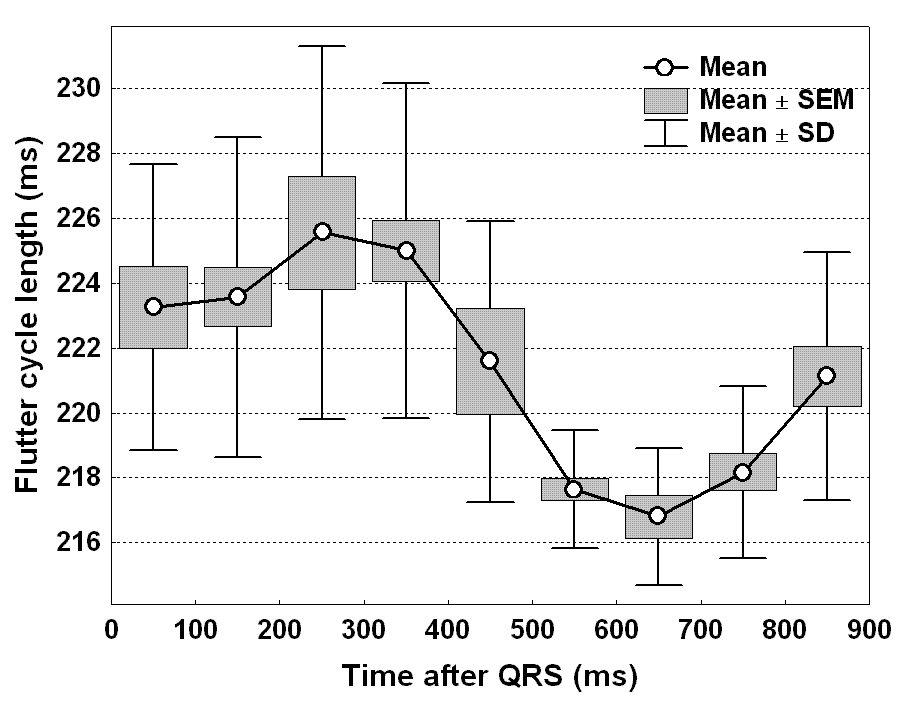VENTRICULOPHASIC MODULATION OF INTRAATRIAL CONDUCTION IN TYPICAL ATRIAL FLUTTER
Introduction: Autonomic neural influence of ventricular contractions on sinus nodal discharge (ventriculophasic sinus arrhythmia) is present in the setting of complete atrioventricular (AV) block.
Hypothesis: We investigated whether analogous phenomenon can be observed in the case of atrial macroreentrant arrhythmia.
Methods: Digital recordings (1 min) of surface ECG, lateral right atrium, and coronary sinus electrograms were obtained in 22 patients before radiofrequency ablation of typical atrial flutter (AFL; 17 clockwise, 5 counterclockwise) with ≥ 3:1 AV block. Atrial electrograms (A) from right atrium duodecapolar catheter and coronary sinus decapolar catheter were automatically identified and A-A intervals in different phases of ventricular cycle were compared (paired t-test).
Results: Consistent shortening of AFL cycle length was observed at ~400 ms after QRS complex (Figure, representative example). In all patients, AFL cycle length at lateral right atrium site was the longest (239.8 ± 33.2ms) in the interval 100-300 ms after QRS and the shortest (232.9 ± 33.3 ms) in the interval 500-700ms after QRS with mean difference of 6.9 ± 4.8 ms (p<0.00001). Comparable modulation of intraatrial conduction was found for coronary sinus electrograms and for patients with counterclockwise and clockwise AFL.
Conclusions: Significant ventriculophasic oscillation of AFL cycle length was documented. However vagal efferent action following each ventricular contraction is plausible, more investigation is necessary for uncovering exact physiological mechanism of this phenomenon witch might be useful for investigation of atrial autonomic neural input.


